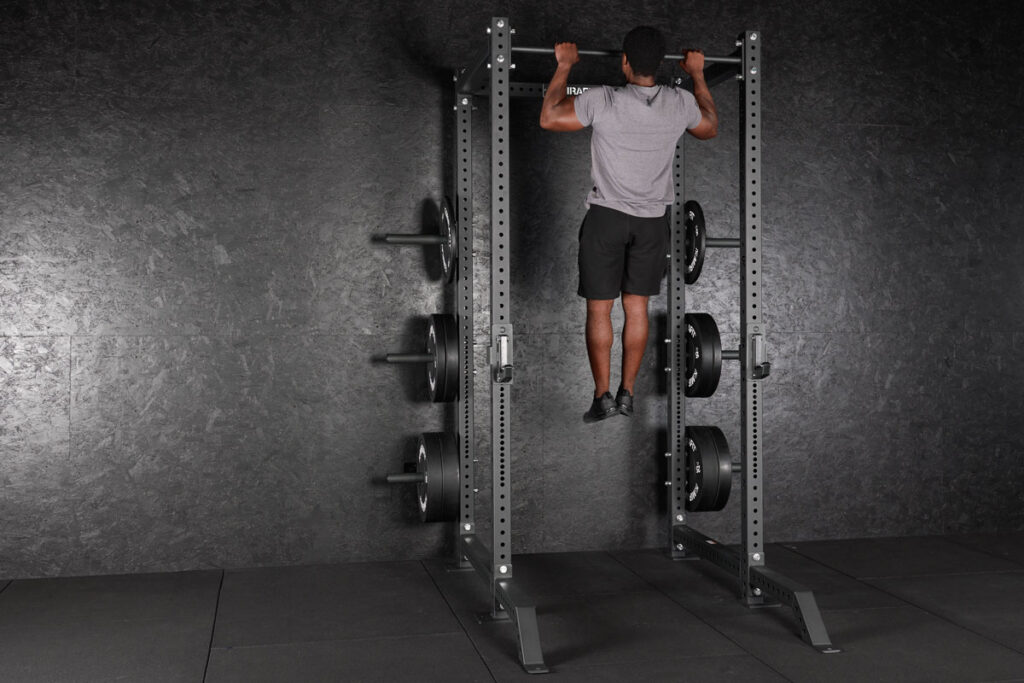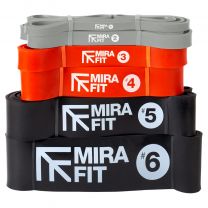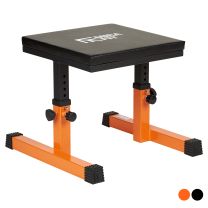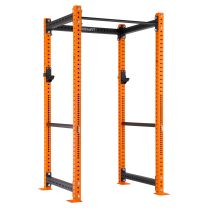How to train for a muscle-up
How to train for a muscle-up

The muscle-up is one of the most visually impressive calisthenic moves you’ll see – a fundamental technique you’ll need to master if you’re looking to step into other forms of freestyle bar movements, and an all-round feat of strength that’s become iconic in the functional fitness industry.
It’s a strength movement that most people will attempt, but very few will master. But what is a muscle-up? Why should you incorporate it into your training routine? And how can you start conditioning yourself to pull off this impressive exercise?
We spoke to Ricky Warren, callisthenics and bodyweight guru, to help break down everything you need to know before training for your first muscle-up.
Performance personified
When it comes to performance, the muscle-up represents your ability to both pull and push your body weight, going from an extended pull-up position, past your chest, and pressing into the peak of a straight bar dip. It’s an explosive movement that’ll take multiple muscle groups, an immense amount of strength, and plenty of technique to complete successfully.
Can anyone do a muscle-up?
The short answer, is yes.
“Most physically capable people can do a muscle-up, but it is a specific skill which requires specific training,” says Ricky.
“All movements can be broken down into how hard they are in a few categories, like skill, mobility, and strength/power. In the case of the muscle-up, it’s a medium skill, medium mobility and high strength/power move. Therefore, the most important element of training for the muscle-up, is strength.”
Don’t panic, we’ll teach you how to strengthen the right muscles so you can work up to your first muscle-up later.
Three benefits of muscle-up training
The muscle-up is a particular movement utilised in callisthenics and gymnastics. But, even if you’re training to be a different kind of athlete, there are three reasons why you might want to include muscle-ups into your weekly workout routine.
Strength
Yes, you’ll need a lot of strength to complete a muscle-up, but you’ll gain even more through training for them, and completing a successful rep.
If you’re looking to lift heavier weights, then you’ll know that grip strength matters. Arm hangs, chin-ups, pull-ups, and inverted rows all help to improve your grip, and you’ll be doing these exercises during preparation and throughout your muscle-up training.
As it’s equally a push and pull motion, you’ll be targeting both your triceps and biceps in every rep too, strengthening each muscle simultaneously, creating symmetrical gains.
And It’s not just for your arms. You’ll need to incorporate your lats, delts, and traps (back and shoulders) as you bring your chest to the bar, and your lower pecs (chest) will play a crucial part in getting you through the upper half of the movement.
Size
While the muscle-up itself is not categorised as a compound lift, some of the movements and exercises involved in hitting the peak are and this could see an increase in muscle growth.
“Explosive compound lifts are proven in sport science to create a spike in your naturally occurring testosterone and HGH levels, and these hormones help with overall growth and strength increases,” Ricky explains.
“You can get bigger and stronger by including compound leg exercises into your routine. In the same way, muscle-ups are known for being one of the kings of upper body movement due to the complexity of the move, and the amount of muscle/nervous system engagement created.”
Stability
Stability is the ability to control your body position from head to toe through movement, and, if you can’t stabilise your body and joints, you won’t generate as much force from them.
Like strength, you’ll need a certain level of stability to finish a muscle-up. But, once you incorporate muscle-ups into your routine, you could see improvements across all your workouts.
By increasing stability and balance, you’ll help to build the proper foundation from which your body can move efficiently, reduce stress at your joints, and protect other tissues like tendons and ligaments that may potentially lead to injury.
How to work up to a muscle-up
Now that you know what a muscle-up is and why you might want to incorporate them into your training routine, we’re going to help you build the strength you need to master the ultimate upper-body movement starting from the ground-up.
Step #1 - Resistance Band Lat Pull Down

Your lats play an essential role in the first part of the muscle-up movement, helping you to bring your chest above the bar in a pull-up motion.
Start by wrapping your preferred Resistance Band around a secure high bar, place your hands around chest width, sit straight, and bring your arms down in a smooth motion, pulling through the elbows and contracting them just behind your back. Hold for 1 second, and return.
Step #2 - Leg Assisted Pull Up

Once you’ve warmed up your lats, find a stable chair, bench, or step-up box that places your chin as close to your pull-up bar as possible.
Once in position, place your hands in a supinated grip (palms facing towards you) at shoulder width, then slowly lower yourself down, taking as much weight on your arms as you can but supporting them with your legs, and return to the top position. Remember to adjust the pressure on your legs with your ability.
Step #3 - Hang tough!

This one looks simple, but it’s called hang tough for a reason.
Place your hands in a pronated grip (palms facing away from you) at shoulder width. Then, simply let your feet and body hang and hold on for as long as you can. Try to keep your body still throughout the exercise.
Step #4 - Resistance Band Pull Ups

Progressing on from our resistance band pull-downs, this one will switch things up, with the band helping you to achieve your goal.
Wrap your resistance band around a secure pull-up bar. Then, using a bench or by lifting your body, tuck your knees and secure the band underneath them. The more tension in the band, the more it’ll help.
With your palms facing away from you, take a slightly wider than shoulder grip, and pull with your arms, leading through your elbows, until your chin is level or just above the bar. Lower yourself down gently, and repeat.
Step #5 - Negative Pull Ups
It’s okay to cheat your way up on this pull-up variation, as the key here is time under tension.
Place your hands in a pronated pull-up grip slightly wider than your shoulders. Using a safe chair, bench, or box, get into the top position of a pull-up, with your chin slightly above or level with the bar. Then, take the pressure off of your legs, and lower yourself in a slow and controlled manner.
Step #6 - Full Pull Up

Time to put all your practise into action.
You’ll need to take a pronated grip, slightly wider than shoulder-width, and just like before, focus on getting your chin in-line or slightly above the bar. If you’re finding it tough, head back and repeat the previous exercises, making them slightly harder with lower resistance bands or with less support from your legs.
Step #7 - Wide Pull Ups
You can do a pull-up, now try this wide grip variation for even more lat activation.
Just like the standard pull up, you’ll want to take a pronated grip, but this time, at a much wider stance. You’ll notice that this variation is noticeably harder as it places more pressure on the back and less on your biceps. Try sticking your chest out and focus on bringing your pecs to the bar.
Step #8 - Weighted Pull Ups

Once you’re comfortable with full pull-ups, you’ll need to add weight to progress.
Using a weight belt and chain or by gripping a dumbbell between your feet or knees, perform a full pull up with your hands slightly wider than your shoulders.
Step #9 - Towel Grip Pull Ups

Yes, a towel, but before you laugh, hear us out.
When it comes to muscle-ups, your grip strength matters. You’ll need to squeeze and hold the towel tight while performing these towel pull-ups, training your forearm and biceps as well as your shoulders and back.
Wrap a towel over your pull-up bar, grip it with one hand on each side, and bring your head level with the bar on your left. Then, lower yourself down, and this time, bring your head to the right side of the bar. Make sure to do an even amount of reps on each side. If you finish a set on an odd number, start the next set on the side you missed.
Step #10 - Muscle Ups
It’s the moment you’ve trained so hard for.
There’s a lot that goes into a muscle-up movement, so we suggest you go back and watch the video above to breakdown the exercise and visualise the motion. You’ll need to perform a pull-up, continuing past the peak of the standard exercise, tucking your hands under your shoulders simultaneously, and finish by pressing upwards away from the bar.
Even with your training, this movement is going to be tough to master, and you’ll need to practise before you can make it look effortless.
“Don’t be too eager to sacrifice technique for getting on top of the bar,” says Ricky.
“Getting on top of the bar does not mean you did a muscle-up. There are many ways to do that which are not muscle-ups. How you get up there, with how much control, poise, and power, is how, and why a muscle-up is separated from the rest.”
For more content, follow us on Instagram, YouTube, TikTok, and on our official Mirafit Facebook page.
Enter your email to signup to our newsletter
Tags: Equipment > Power Racks and Cages ; Exercise Type > Strength ; Target Area > Arms








